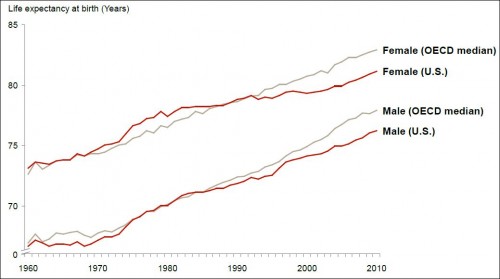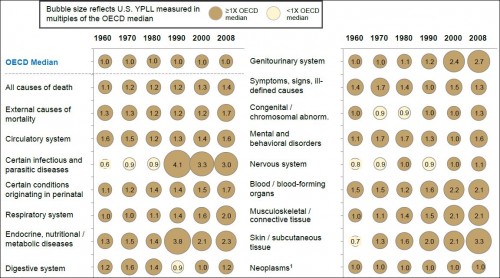The following originally appeared on The Upshot (copyright 2014, The New York Times Company).
For a drug to be approved by the Food and Drug Administration, it must prove itself better than a placebo, or fake drug. This is because of the “placebo effect,” in which patients often improve just because they think they are being treated with something. If we can’t compare a new drug with a placebo, we can’t be sure that the benefit seen from it is anything more than wishful thinking.
But when it comes to medical devices and surgery, the requirements aren’t the same. Placebos aren’t required. That is probably a mistake.
At the turn of this century, arthroscopic surgery for osteoarthritis of the knee was common. Basically, surgeons would clean out the knee usingarthroscopic devices. Another common procedure was lavage, in which a needle would inject saline into the knee to irrigate it. The thought was that these procedures would remove fragments of cartilage and calcium phosphate crystals that were causing inflammation. A number of studieshad shown that people who had these procedures improved more than people who did not.
However, a growing number of people were concerned that this was really no more than a placebo effect. And in 2002, a study was published thatproved it.
A total of 180 patients who had osteoarthritis of the knee were randomly assigned (with their consent) to one of three groups. The first had a standard arthroscopic procedure, and the second had lavage. The third, however, had sham surgery. They had an incision, and a procedure was faked so that they didn’t know that they actually had nothing done. Then the incision was closed.
The results were stunning. Those who had the actual procedures did no better than those who had the sham surgery. They all improved the same amount. The results were all in people’s heads.
Many who heard about the results were angry that this study occurred. They thought it was unethical that people received an incision, and most likely a scar, for no benefit. But, of course, the same was actually true for people who had arthroscopy or lavage: They received no benefit either. Moreover, the results did not make the procedure scarce. Years later, more than a half-million Americans still underwent arthroscopic surgery for osteoarthritis of the knee. They or their insurers spent about $3 billion that year on a procedure that was no better than a placebo.
Sham procedures for research aren’t new. As far back as 1959, the medical literature was reporting on small studies that showed that procedures like internal mammary artery ligation, a surgical procedure used to treat angina, were no better than a fake incision.
In 2005, a study was published in the Journal of the American College of Cardiology proving that percutaneous laser myocardial revascularization, in which a laser is threaded through blood vessels to cut tiny channels in the heart muscle, didn’t improve angina better than a placebo either. We continue to work backward and use placebo-controlled research to try to persuade people not to do procedures, rather than use it to prove conclusively that they work in the first place.
A study published in 2003, without a sham placebo control, showed that vertebroplasty — treating back pain by injecting bone cement into fractured vertebrae — worked better than no procedure at all. From 2001 through 2005, the number of Medicare beneficiaries who underwent vertebroplasty each year almost doubled, from 45 to 87 per 100,000. Some of them had the procedure performed more than once because they failed to achieve relief. In 2009, not one but two placebo-controlled studies were published proving that vertebroplasty for osteoporotic vertebral fractures worked no better than faking the procedure.
Over time, after the 2002 study showing that arthroscopic surgery didn’t work for osteoarthritis of the knee, the number of arthroscopic procedures performed for this condition did begin to go down. But at the same time, the number of arthroscopic procedures for tears of the meniscus cartilage in the knee began to go up fast. Soon, about 700,000 of them were being performed each year, with direct costs of about $4 billion. Less than a year ago, many were shocked when arthroscopic surgery for meniscal tearsperformed no better than sham surgery. This procedure was the most common orthopedic procedure performed in the United States.
The ethical issues aren’t easily dismissed. Theoretically, a sugar pill carries no risk, and a sham procedure does. This is especially true if the procedure requires anesthesia. The surgeon must go out of his or her way to fool the patient. Many would have difficulty doing that.
But we continue to ignore the real potential that many of our surgical procedures and medical devices aren’t doing much good — and might even be doing harm, since real surgery has been shown to pose more risks than sham surgery.
Rita Redberg, in a recent New England Journal of Medicine Perspectives article on sham controls in medical device trials, noted that in a recentsystematic review of migraine prophylaxis, while 22 percent of patients had a positive response to placebo medications and 38 percent had a positive response to placebo acupuncture, 58 percent had a positive response to placebo surgery. The placebo effect of procedures is not to be ignored.
Earlier this year, researchers published a systematic review of placebo controls in surgery. They searched the medical literature from its inception all the way through 2013. In all that time, they could find only 53 randomized controlled trials that included placebo surgery as one option. In more than half of them, though, the effect of sham surgery was equivalent to that of the actual procedure. The authors noted, though, that with the exception to the studies on osteoarthritis of the knee and internal mammary artery ligation noted above, “most of the trials did not result in a major change in practice.”
We have known about the dangers of ignoring the need for placebo controls in research on surgical procedures for some time. When the few studies that are performed are published, we ignore the results and their implications. Too often, this is costing us many, many billions of dollars a year, and potentially harming patients, for no apparent gain.
@aaronecarroll


